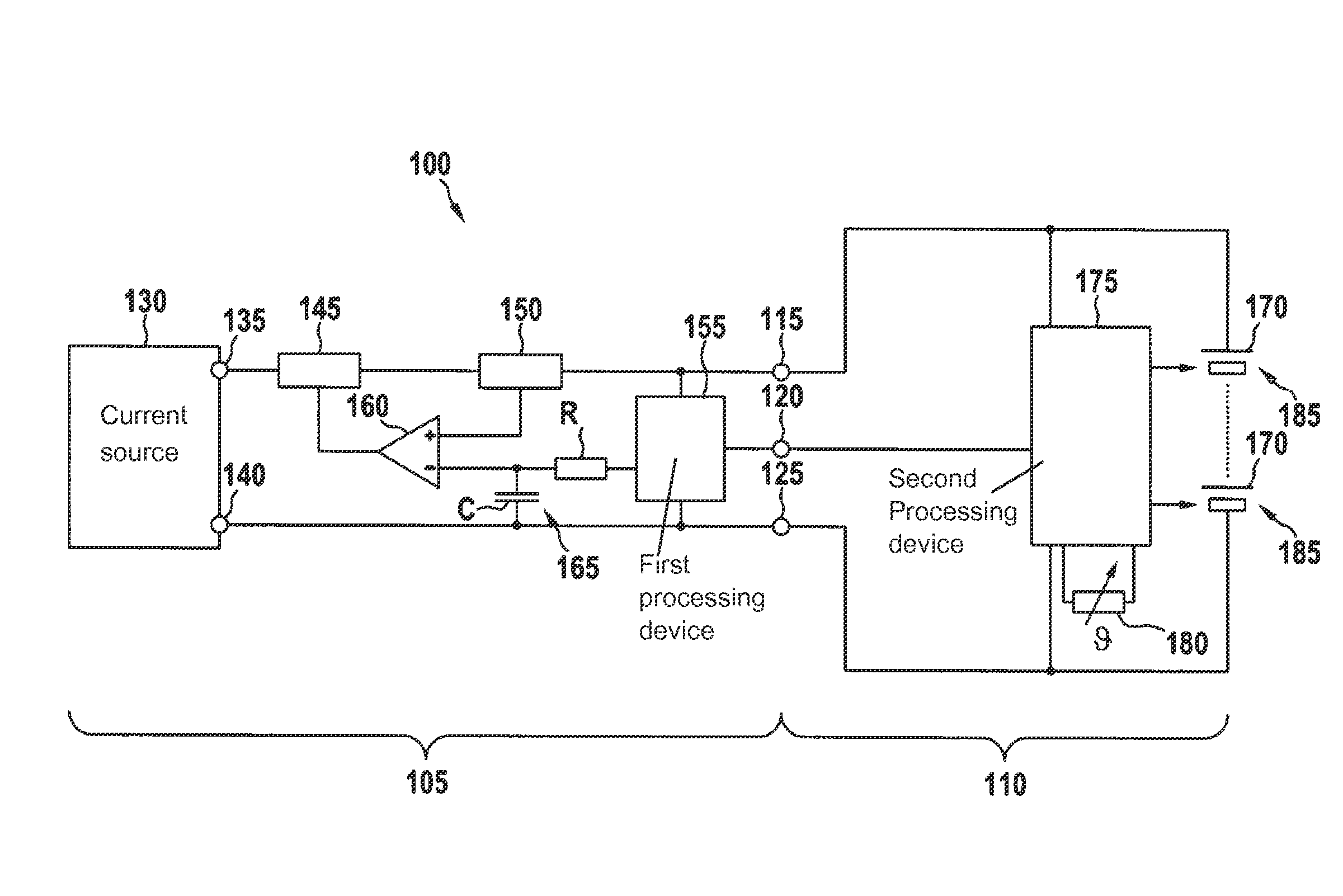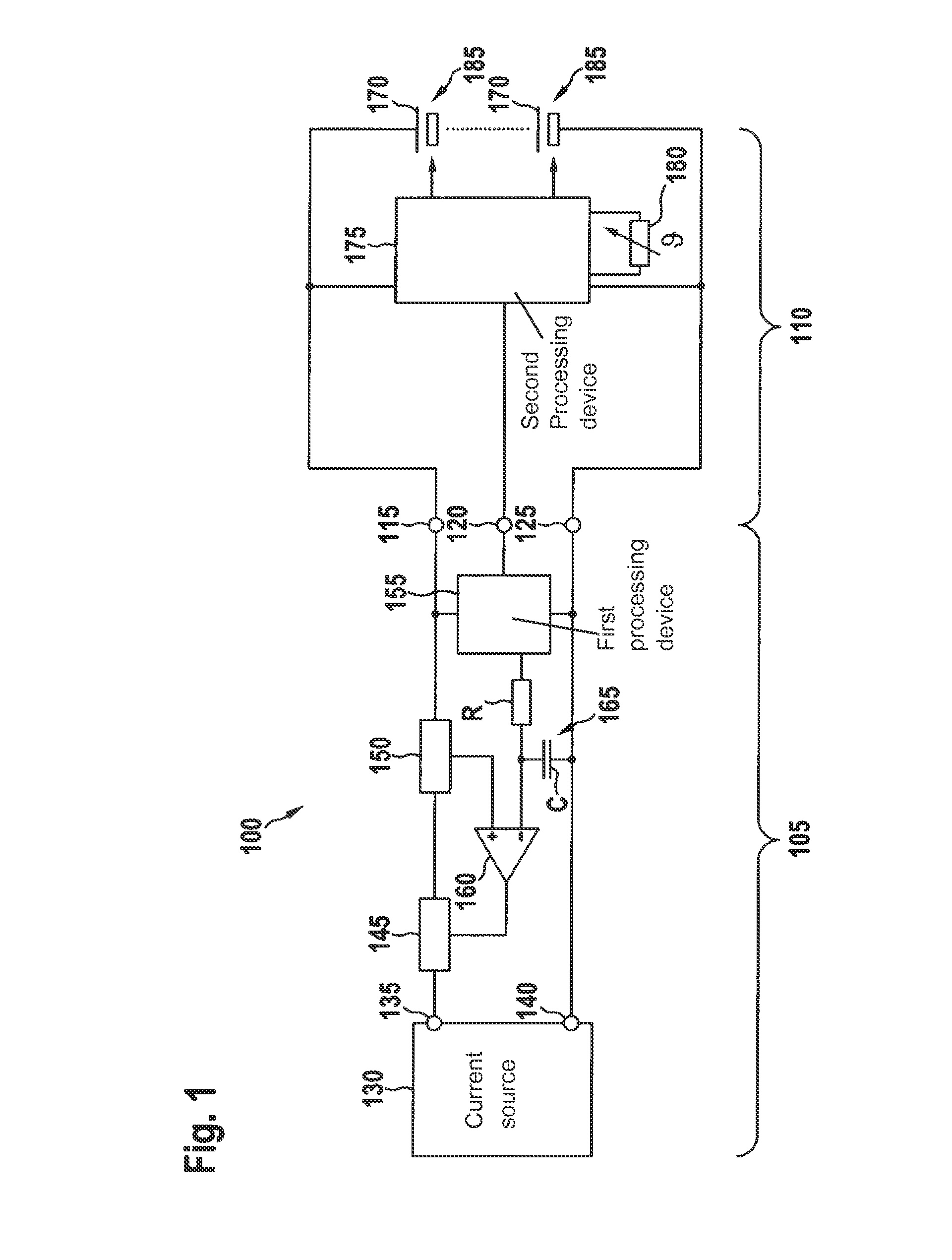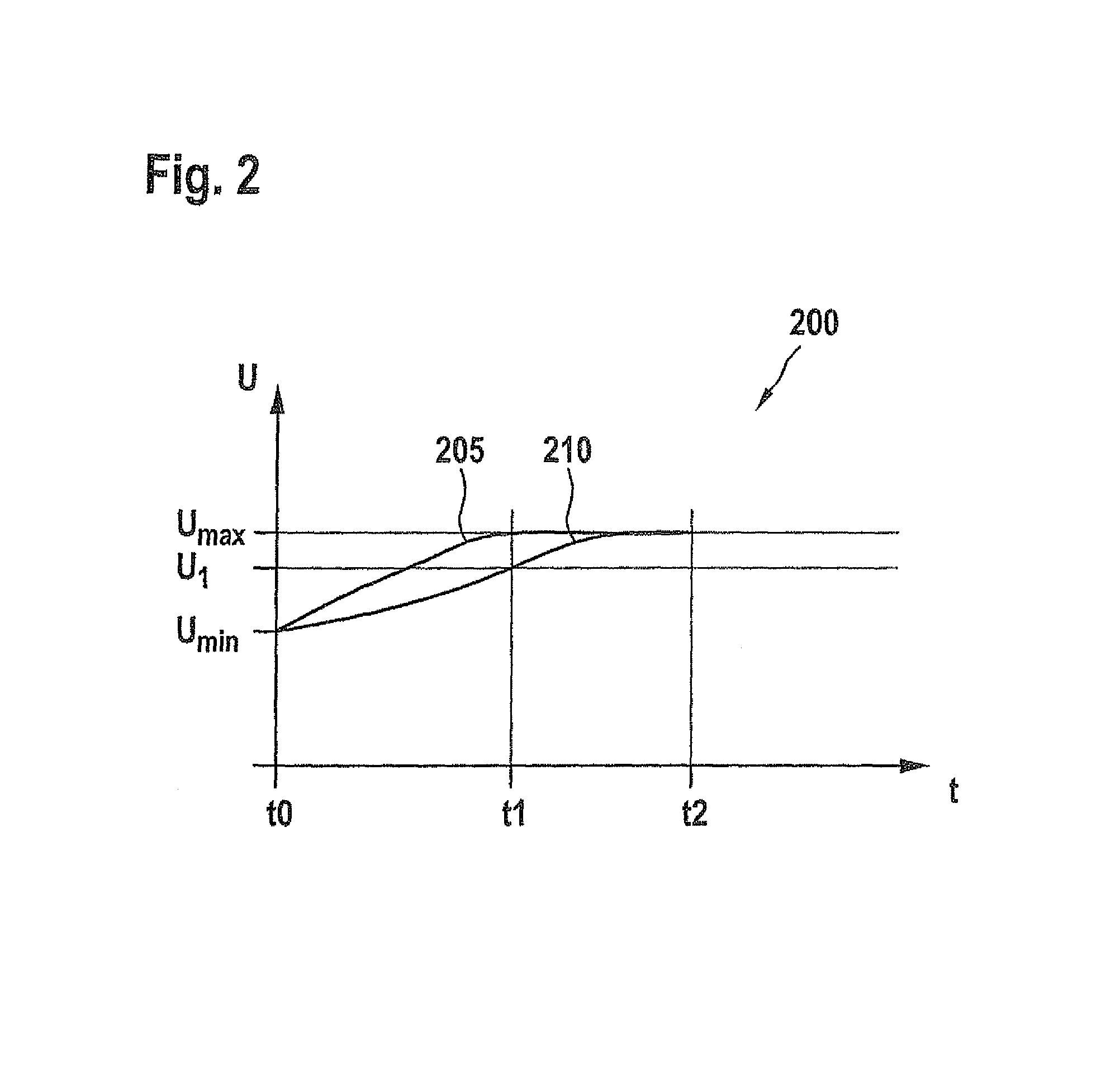Electrically chargeable energy store device and method of charging
a technology of energy storage and energy storage device, which is applied in the direction of electrochemical generators, secondary cell servicing/maintenance, transportation and packaging, etc., can solve the problems of lithium ion batteries that may burst, batteries that may react sensitively to charging errors, etc., and achieve the effect of easy production
- Summary
- Abstract
- Description
- Claims
- Application Information
AI Technical Summary
Benefits of technology
Problems solved by technology
Method used
Image
Examples
Embodiment Construction
[0026]FIG. 1 shows a system made up of a charging device 105 and an energy store 110. Charging device 105 is electrically connected to energy store 110 using a first connection 115, a second connection 120 and a third connection 125.
[0027]Charging device 105 includes a current source 130 having a first terminal 135 and a second terminal 140. Furthermore, charging device 105 includes a limiting device 145, a current sensor150, a first processing device 155, a resistor R, a capacitor C and a comparator 160.
[0028]A charging current provided by current source 130 flows from first terminal 135 to limiting device 145, from there to current sensor 150 and on to first connection 115. After the charging current has flowed within energy store 110 from first connection 115 to third connection 125, it flows on to the second terminal of current source 130, so that the circuit is closed. Limiting device 145 is controlled by an output signal of comparator 160. Comparator 160 has a positive (noninv...
PUM
| Property | Measurement | Unit |
|---|---|---|
| cell voltages | aaaaa | aaaaa |
| voltages | aaaaa | aaaaa |
| charging current | aaaaa | aaaaa |
Abstract
Description
Claims
Application Information
 Login to View More
Login to View More - R&D
- Intellectual Property
- Life Sciences
- Materials
- Tech Scout
- Unparalleled Data Quality
- Higher Quality Content
- 60% Fewer Hallucinations
Browse by: Latest US Patents, China's latest patents, Technical Efficacy Thesaurus, Application Domain, Technology Topic, Popular Technical Reports.
© 2025 PatSnap. All rights reserved.Legal|Privacy policy|Modern Slavery Act Transparency Statement|Sitemap|About US| Contact US: help@patsnap.com



